ERIK NATZKE
PEOPLEText: Yurie Hatano
The Shift cover of this month was created by Erik Natzke, an interactive designer who is constantly trying to blur the lines between design and technology. With a keen awareness for how and where to push the limits of the medium without isolating the audience, Erik is a consistent risk-taker. Crediting his success with having the willingness to fail and the stubbornness not to give up, Natzke’s work ethic has pushed the boundaries of what previously had been considered possible. Imagination, adventure, and a desire to amaze as much as entertain are all part of the driving forces behind his work. He will be one of the important presenters at coming FITC Seoul 2008, an international design and technology event held on Oct 14th, 2008.
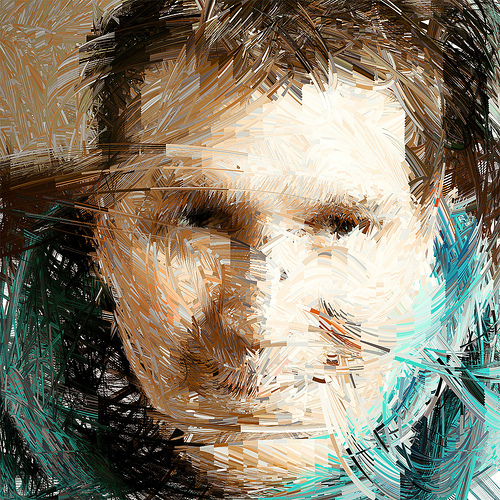
Could you please tell us your background?
Shortened History.
I was definitely someone who was fascinated by how things were made. From mechanical as well as from aesthetic perspectives. I spent a large amount of my youth playing with circuit boards, tearing apart electronics, and blowing things up. And despite having a pretty strong desired to draw and paint, I never thought seriously of Design as a possible career path.
Initially I entered University thinking I’d likely apply an interest in Biology towards a possible career in teaching. It wasn’t until half way through my degree that I discovered a more serious interest in Illustration and Graphic Design. I managed to persuade my advisor (who was also a teacher) to let me help produce a lab manual for one of her classes which I had taken that previous semester. Still knowing little about desktop publishing and image manipulating, I spent that entire summer teaching myself photoshop, illustrator, and quark. Every day was a new challenge which I would happily devote my entire day trying to solve. Eventually I realized that Design was a greater interest/passion and far better outlet for my creativity.
In the fall of ’98 I decided to transfer schools to the Milwaukee Institute of Art & Design where I was a transfer student in the Communication Design program for the next two years. In the summer of 2000 three classmates (JD Hooge, Ty Lettau, & Craig Kroeger) and myself decided to start a Design Studio we called Fourm. At the time both Flash and Interactive design on the web were both quite limited. So we spent most of our time educating ourselves about the tools as well as trying to discover new models of interaction with clients we were fortunate enough let us play with the experiences we were creating for them.
Fall of 2001 brought on many changes after 911 and our little studio was not any different. By 2002 we amicably decided to go our separate ways. For myself and Tobey that meant when the opportunity to move to San Francisco came we took it. I ended up working at Method Design Studio for just over a year before I decided to go off on my own.
Since September of 2003 Natzke Design has served as a boutique Interaction Design Studio that works in collaboration with Agencies throughout the United States. The only employees have been myself and Tobey. Unless you want to also count our dog “Moo” who does make sure we take time out of our day to go outside and play a little. We’ve done projects for companies like HP, Sprint, Comcast, Saturn, Yahoo, Virgin Atlantic, Coca Cola, and Adobe. We’ve also had the incredible fortune of having been invited to present at many of the design and technology conferences around the world. This past year alone Tobey and I have travelled to speak at conferences in Brighton (England), Munich (Germany), Amsterdam (Holland), Toronto (Canada), Oslo (Norway), Lisbon (Portugal), Minneapolis (USA), Chicago (USA), and San Francisco (USA). And before the year is up we still have trips planned to New York (USA), Brighton (England), and last but never least Seoul (South Korea). Along with having great honor of being invited to these wonderful places and amazing conferences I am extremely grateful that Tobey and I are able to experience these places together.
How and when you started to focus on the digital medium and why?
Initially I started looking into digital mediums after having worked in traditional print design throughout the 90s. The allure of being able to distribute content to a virtually unlimited audience was definitely greatest appeal. Especially when you consider that most of the design work I was doing already started out digital. After having done several print projects where errors would surface at the press stage of the project, I instantly to loved having the ability to fix and change problems instantaneously.
That said, the thing that pushed me to learn and explore this medium was the ability to interact with the audience. Creating an experience or an environment that allowed people to interact with the things I had created. Still coming from a traditional communication design perspective, I looked to the more designer friendly programs. At the time (95/96) the program of choice was Director and the language was lingo. Initially I liked how easy it was to animate objects with the timeline, but the allure for me was to write code that could do virtually the same thing but in infinitely different ways by adding just a few randomized values into the equation.
Please introduce us some of your recent projects.
When I first started working with code based creation a lot of the work I produced was under the context of experimentation. The purpose for doing this was to find ways to self-educate within a field that had few educational resources. Experimentation was how I, and many others at the time, went about discovering what was possible within this digital medium. Eventually those experiments translated into commercial work where I discovered that sometimes the most interesting problems to solve are not necessarily always the ones you create for yourself. After many years of working commercially I started to see greater potential emerge for this medium as a means of artistic expression. Many of the barriers from both from the power of the processors as well as refinement in the tools (specifically Flash). These things allowed for greater complexity and improved design fidelity.
The follow are several series of work from the past year.
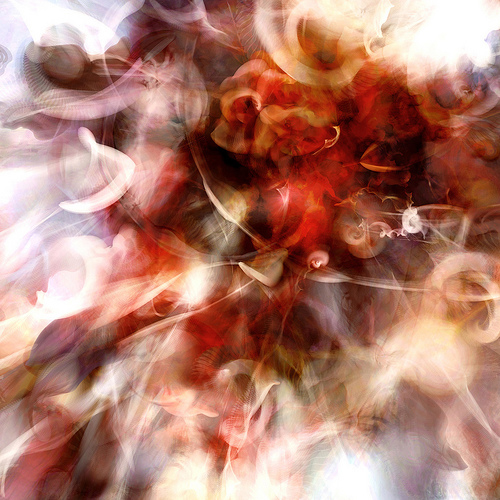
Journey
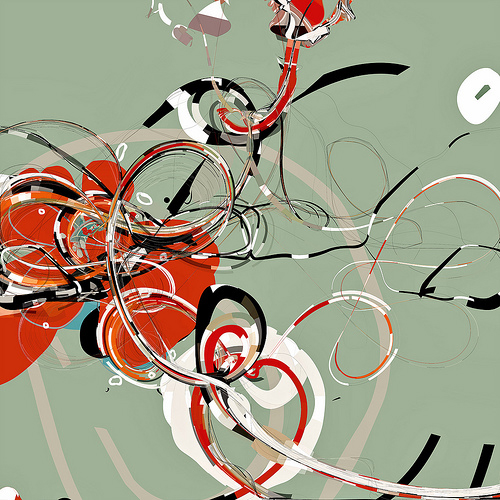
Abstract
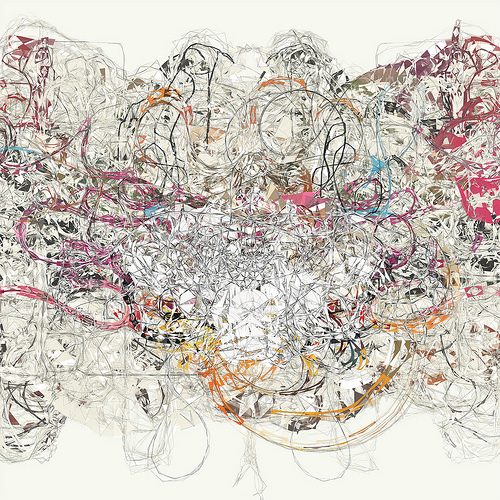
Symmetry
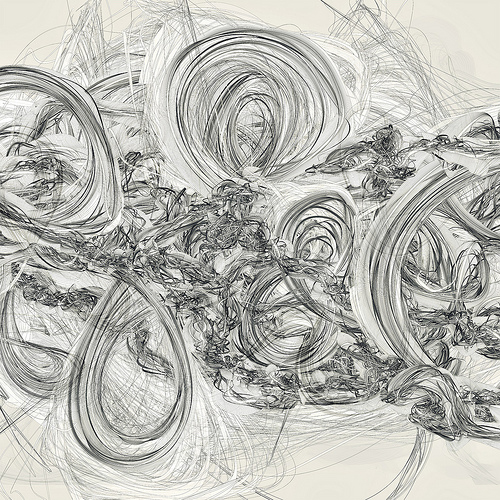
Sketch
For more artwork from the past 2 years, I invite you to take a look at my flickr set entitled “Exploring the Medium”
You have been one of important speakers at international digital creative conferences including FITC and OFFF. What would be the common theme you try to share/achieve?
Work hard. Learn. Explore.
Knowledge is the foundation in the process of creations. But knowledge is limited, so it is important to apply imagination and creativity towards acquired knowledge in order to create something that is completely new. Even if the next design challenge you take on could be solved in similar ways to projects of the past, it’s more valuable to find new ways to solve reoccurring challenges. Similarly, it is also important to fight the fear of failure. A persons ability to succeed is correlated with their ability to confront and accept failure as an inevitable process of learning.
Success and failure go hand in hand.
Machines are good at repetition. People are good at dreaming. Leave the repetitive tasks to the machines and find ways to allow for your imagination to grow.
How is the feedback from the world through those conferences? And any differences in countries?
Each place is very different from the other. Even within the United States. There are a lot of factors, even beyond geography, that play into the type of atmosphere created at a conference. All of which contribute to the kinds of feedback you receive.
Regardless of the location or venue there are a few things that I always try to remind myself to concentrate on that generally have a large impact on the kinds of feedback I receive. Probably the most important is always show the same passion within presentation as I have for creating the work. I also try to ensure that I am giving people something of value to take away with them. Nothing is more underwhelming then to see someone unenthusiastically show a portfolio of work without lending some valuable insight to process and motivation behind the work.
FITC Seoul 2008 will be held in October 14th for the first time in Asia. What are you expecting for the event?
Aside from the 40+ Hours of travel to and from 🙂
I look for FITC Seoul to be an event where you are able to sit back and enjoy a full day of watching some of the best people in their field talk about their passions while lending insights to their process and motivation.
From a personal level I look forward to seeing people in Seoul whom we’ve had the good fortune to have met many years ago in Seoul during our first visit.
How was the workshop “Paint by Number” at OFFF, Barcelona?
The interesting thing is that I probably ended up learning just as much about my own design process as the people who attended the workshop. Deconstruct my own process in a way that the steps made sense was probably the most difficult thing since seldom do I ever have a formal approach to process. I tend to jump around a lot more as my interests shift quite rapidly.
With regards to the workshop, I think it was well received. My favorite times were when the conversation would go both ways and people were sharing their ideas and looking for insight into how to possibly solve problems they were having. Because regardless of what I can offer as insights from my own process, it’s sometimes more interesting to see the same problem solving and imagination applied to another person’s idea and allow for the conversation to become more collaborative.
Could you tell us the concept of this month’s Shift cover?
The cover that I created for Shift this month is a working representation of the drawing engine that I am currently working with to create prints.
I’m randomly cycling through 3 images that are embedded in the movie to supply color to the ribbons being drawn. The piece is either guided by the users mouse movement over it or through random motion (if user interaction is not detected).
Do you have any creators you’ve influenced by?
Influenced is such a strong word. As if in some way it denotes a diminished originality through some uncontrollable force of aspiration. So short answer would be. No. I’ve made a conscious effort to create through means of exploration and play.
But to answer a similar question (and one I think you were more likely trying to pose).
“Are there any creators you are inspired by ”
Absolutely!
And it’s generally not specifically the work, but rather the process they underwent that inspires me the most.
Last fall I went to one of Gaudi’s museums in Barcelona. This was after having been to Barcelona several times and having had the chance to appreciate his work in person. This time I saw a display that demonstrated how he would design the structural forms of the build through a series of chains and small sandbags that would hang suspended from the ceiling. In the absence of technology this was a way to design tall structures that could harmoniously withstand the structural load (that conceivably was previously been untested). The simplicity of the idea and intricacy of it’s execution was simply mind blowing for me.
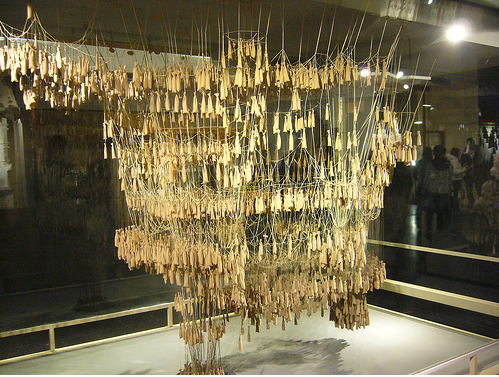
From natatabby’s flickr stream.
What would you try to do next?
Honestly I don’t really know what will be next. I know I have more ideas than the time to do them, so a lot will depend on the whim of the day.
I am very interested in finding ways to take the artwork work I have created outside the confines of the environment of the computer and the limited space of the screen. Creating large scale prints of the work has been the first step in seeing this happen. I have also started to translate my design into embroidery with an embroidery machine I bought several years ago. Laser etching and screen printing are also things I would love to play with more.
Messages to Shift readers?
Try and learn something new each week (or day if you are so daring).
Have friends that challenge you.
Love what you do.
Text: Yurie Hatano





